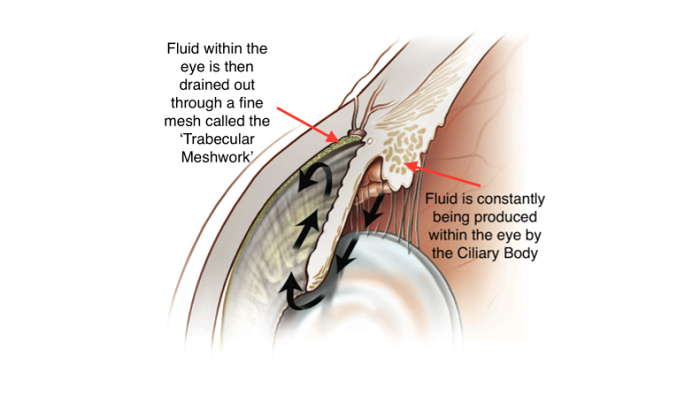Selective laser trabeculoplasty (SLT) is a simple laser procedure performed in the clinic to lower intraocular pressure in suitable glaucoma patients. It can be used as an alternative to regular long-term use of eye drops or as an adjunct when eye drops are not lowering the eye pressure enough.
WHO WILL BENEFIT FROM SLT?
Patients with ‘open-angle glaucoma’ who are in need of lower intraocular pressure to slow down their glaucoma progression are eligible for the procedure. SLT is particularly useful in the following clinical situations:
- intolerance of the side effects of glaucoma medication
- those with difficulty instilling or remembering to regularly take eye drops
- those in whom glaucoma medications are only partially effective and still require lower intraocular pressure
- as an initial treatment for newly diagnosed glaucoma patients to defer the need for glaucoma medications.
WHAT IS SLT & HOW DOES IT WORK?
In SLT, micro-pulses of laser energy are applied to the drainage tissue inside the eye (See Figure 1). This laser energy is specifically designed to target the pigment cells in the drainage tissue, and causes a biological reaction in the tissue that ultimately improves the passage of fluid through the drain and in turn lowers the intraocular pressure. However, it may take 1-3 months for the desired effect to fully appear.
Figure 1

WHAT HAPPENS DURING THE PROCEDURE?
Generally, the laser treatment is split into two sessions to reduce side effects. During each session, only half (180 degrees) of the drainage tissue is treated. Some patients can have good pressure lowering response after just 1 treatment session. The laser is delivered via a microscope similar to those used for eye examination (See Figure 2 and 3). Prior to the treatment, several eye drops are instilled to prepare the eye for the procedure. The entire procedure takes 2-3 minutes to perform, and is generally painless. Mild aching sensation and sensitivity to light may occur after the procedure but usually resolves within a few days.
Fig 2: A lens placed on the eye to allow laser to be applied to the ‘Trabecular Meshwork’
Fig 3: The laser is delivered via a microscope similar to that used for eye examination.
HOW EFFECTIVE IS SLT?
SLT is able to lower intraocular pressure by 25-30% in about 75% of patients receiving the treatment. In those who respond well to the laser, the effect is comparable to that of commonly used glaucoma medications. Pressure-lowering effects of SLT generally last between 1- 5 years. SLT can be repeated in those who have had a good response to their first treatment. However, the success of subsequent treatments may be less predictable.
WHAT ARE THE RISKS AND SIDE EFFECTS?
A key aspect that makes SLT a good option for many patients is that it has very few adverse effects. SLT is generally considered very safe with relatively minor side effects which can include: aching sensation, transient mild blurring and transient intraocular pressure rise that usually resolve within 24 hours. Significant complications are very rare.
WHAT HAPPENS IF IT DOESN'T WORK?
For those patients where SLT fails to lower intraocular pressure to the desired amount, other means of glaucoma treatments such as addition of medications or surgery can still be used. The fact that one has had the laser does not affect the success of other subsequent treatment modalities.
WILL I STILL NEED GLAUCOMA MEDICATION AFTER SLT?
The use of SLT can be thought of as being equivalent to a single glaucoma medication. Whilst some patients can be sufficiently treated with laser alone, others may need laser plus one or more glaucoma medications. It is important to remember that whatever method is used to treat glaucoma, the aim is to primarily slow down its progression. It is therefore crucial to ensure that there is ongoing follow-up examination and testing to monitor for progression of the disease.
